SaveGREEN - Impacts of landscape fragmentation on wildlife in the Beskydy-Kysuce pilot area
14-12-2021
The Beskydy-Kysuce pilot area is a mountainous cross-border region at the edge of the Western Carpathians. It consists of the Moravian-Silesian Beskydy, Kysucké Beskydy, Javorníky, Jablunkov, and White Carpathian mountain ranges, the Hostýn Hills, the Turzovská Highlands, and other local mountain groupings.
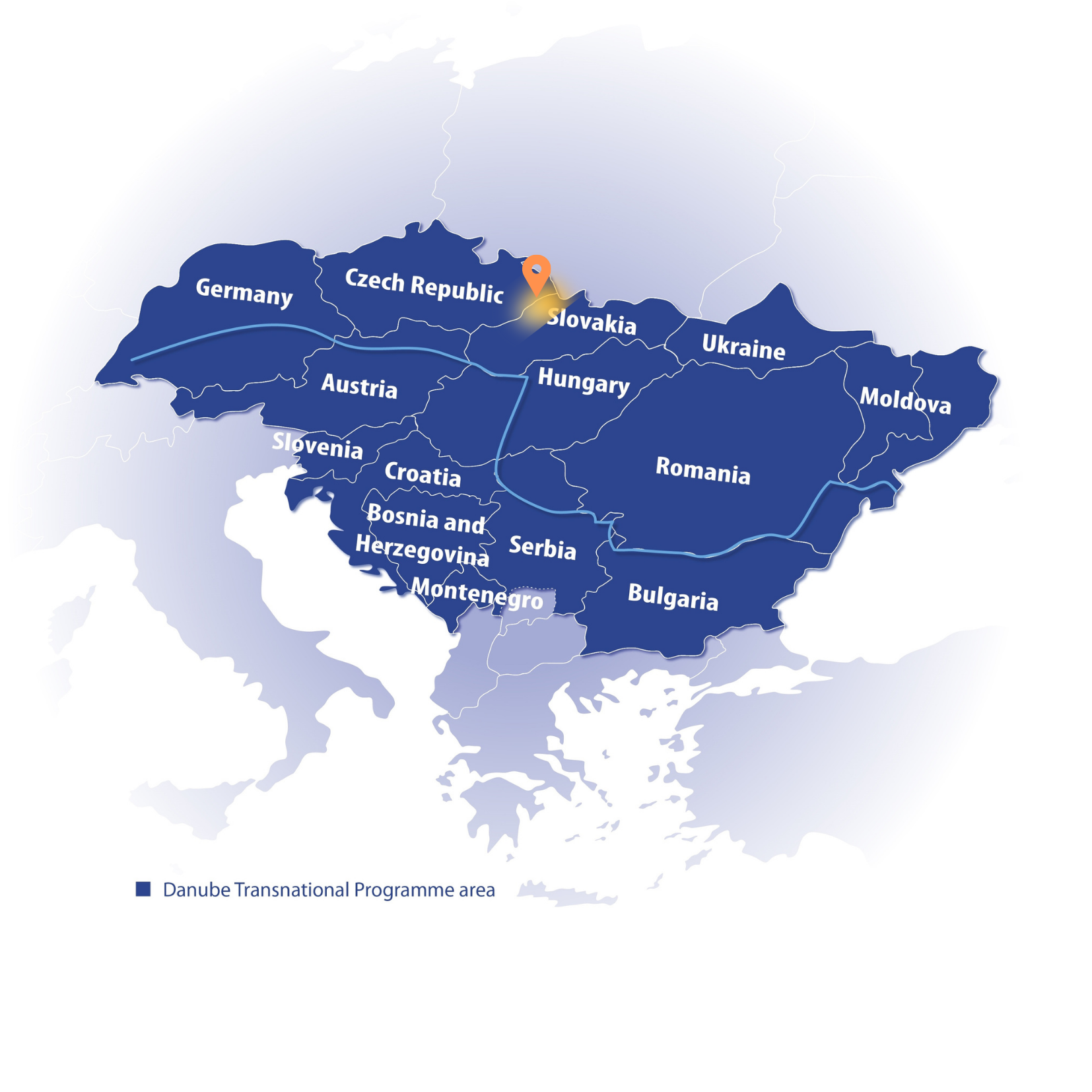 Pilot area map, Eszter Sebestyén, CEEweb
Pilot area map, Eszter Sebestyén, CEEweb
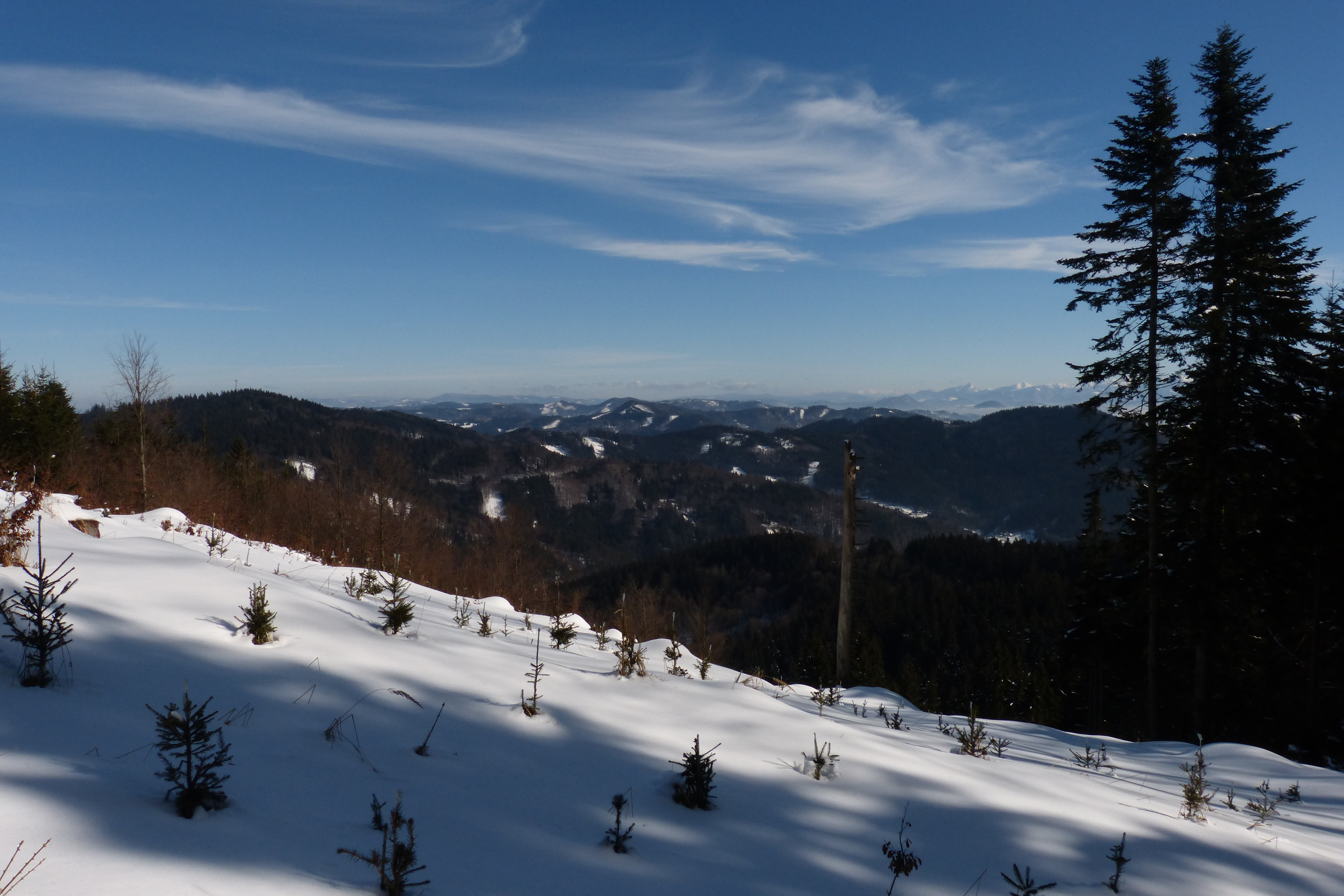 Javorníky, Fatra Photo: Michal Bojda
Javorníky, Fatra Photo: Michal Bojda
The region is home to many rare species and includes protected sites within the Natura 2000 network. Most notably, perhaps, it features the western-most permanent occurrence of Carpathian large carnivore populations – i.e., brown bear, wolf, and lynx. Within the Czech Republic, it is the only area where all three species occur together. Large carnivores are the umbrella species for monitoring the landscape connectivity in these valuable habitats. Unfortunately, road networks, urbanisation and other forms of landscape fragmentation present serious mobility challenges to these and other animal species.
In mountainous and hilly domains, densely populated valleys prevent animals from moving freely through the landscape. The main threats to ecological connectivity are:
- urban development and agglomeration in valleys,
- new transport infrastructure,
- expanded recreational areas,
- land fencing.
Main threats in the pilot area from transportation infrastructure
European route E75 connects the industrial region around Ostrava, via the Jablunkovský Průsmyk Pass, to Čadca and Žilina in Slovakia, where urbanisation rates are on the rise. Czech and Slovak authorities are planning the construction of eco-ducts on both sides to improve wildlife safety.
In the Czech Republic, the D1 highway runs between the Carpathians and mountains lying to the west. Another highway stretching between Hulín and Břeclav, the D55, is currently being built: three of 12 sections are finished (17 km), two sections will be completed in 2023-2024 (17 km), and seven sections are in the preparation stage (49 km).
In Slovakia, the partially finished D3 motorway between Čadca and Žilina) runs along the Kysuce river valley between the Javorníky and the Kysucké Beskydy mountain ranges.
Yet another road project is in the planning stages. When completed, the D49/R6 highway will connect the eastern part of the Czech Republic with western Slovakia and cross the pilot area in the south.
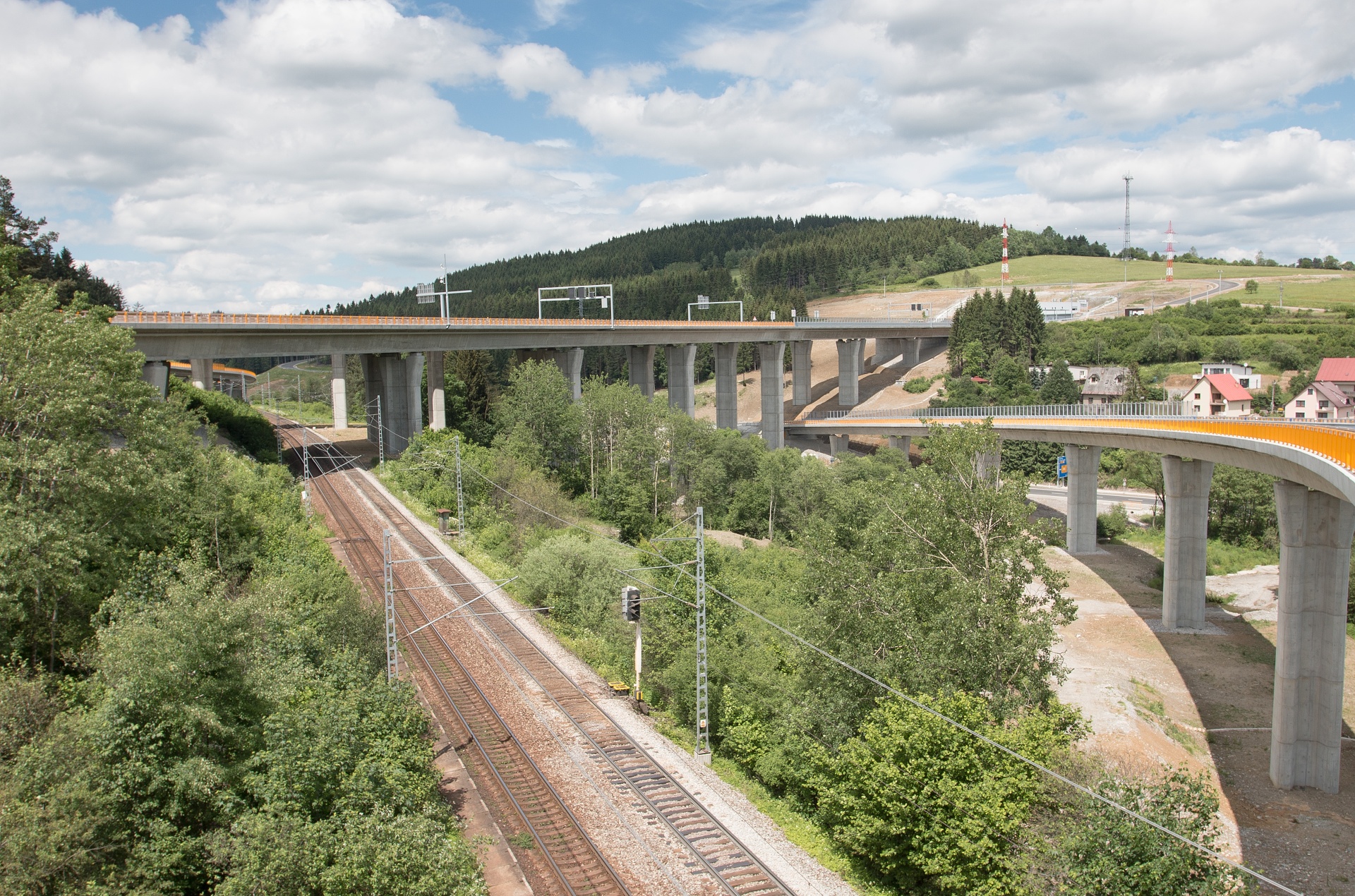 Confluence of transportation infrastructure at Svrčinovec in northern Slovakia. Photo: Peter Drengubian, CHKO Kysuce
Confluence of transportation infrastructure at Svrčinovec in northern Slovakia. Photo: Peter Drengubian, CHKO Kysuce
Restoring connectivity in Beskydy-Kysuce
It is possible to create conditions to restore habitat connectivity for wildlife in this region. The first step is a through the mapping of functional ecological corridors. In the Beskydy-Kysuce pilot area, intensive photo monitoring of large carnivores, as well as telemetric monitoring of lynx, is being carried out for this very purpose. Once species migration corridors are identified, they can then be taken into account in spatial planning and transport infrastructure development schemes.
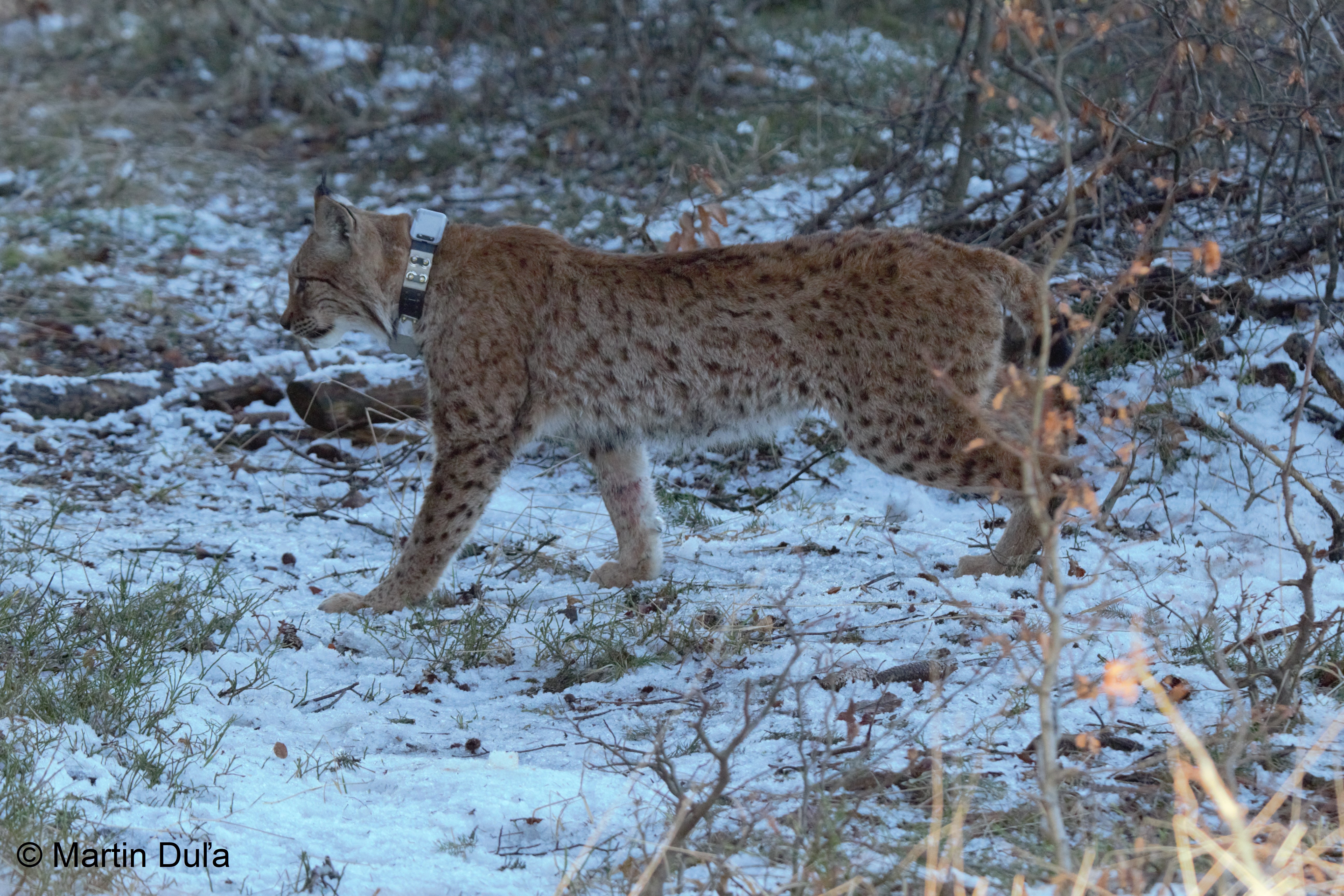 Using GPS telemetry to track Lukáš, a male lynx, in the Besky Mountains. Photo. Martin Dul'a
Using GPS telemetry to track Lukáš, a male lynx, in the Besky Mountains. Photo. Martin Dul'a
Planting trees and greenery along wildlife corridors is another way to help reconnect isolated areas. Forest coverage is one very important factor in determining whether animals will use a corridor.
A good relevant example is the town of Jablunkov, where part of the public land was reserved in the municipal spatial plan for an ecological corridor. Working in cooperation with Hnutí DUHA (Friends of the Earth CZ), the corridor has been replanted with trees.
Impacts of fragmentation on large carnivores
In 2020, two Beskydy lynx died after being struck by vehicles while attempting to disperse from their home territories. Without the interconnection of various populations, there is a risk of extinction for these protected species. Genetic monitoring of lynx in 2018 revealed significant levels of in-breeding.
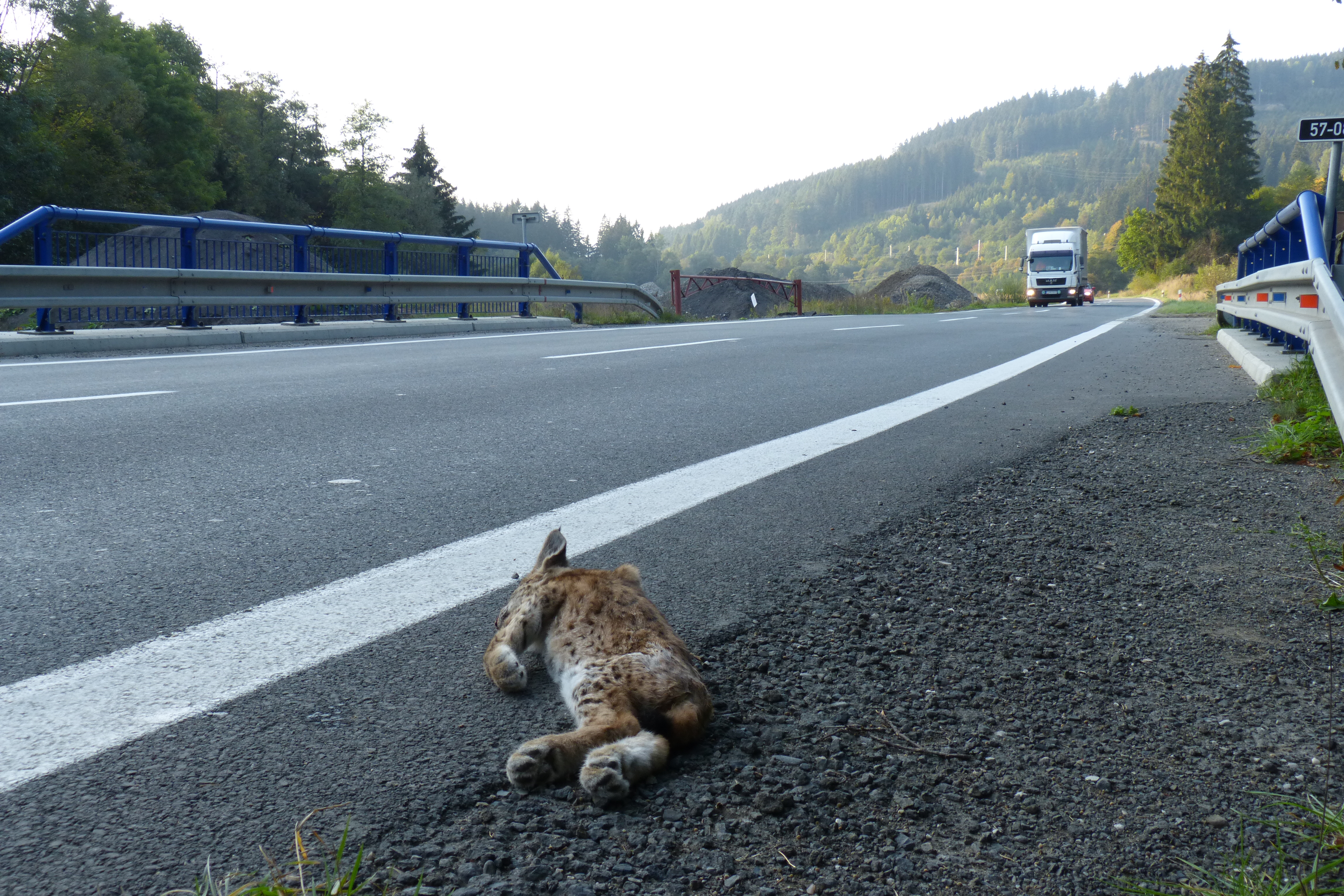 Lynx road fatality at Lomensko. Photo: Michal Bojda
Lynx road fatality at Lomensko. Photo: Michal Bojda
Another concern is that the bear population along the Czech-Slovak border is stagnating. Bear numbers are growing in Slovakia, but not in mountain areas of the Czech Republic.
The Czech Republic as a genetic crossroads
Reproductive exchange between populations increases genetic diversity and is crucial for the survival of large carnivores and other species. Recent genetic analysis shows that wolves come to the Czech Republic from different parts of Europe — from Poland and Germany (the so-called Central European Lowland population), the Carpathians, and even the Alps.
In a surprising result, genetic studies of lynx confirmed the arrival in the Czech Republic of a lynx from either the Baltic population or the German Harz Mountains. Ecological connectivity on a European scale is, therefore, essential.
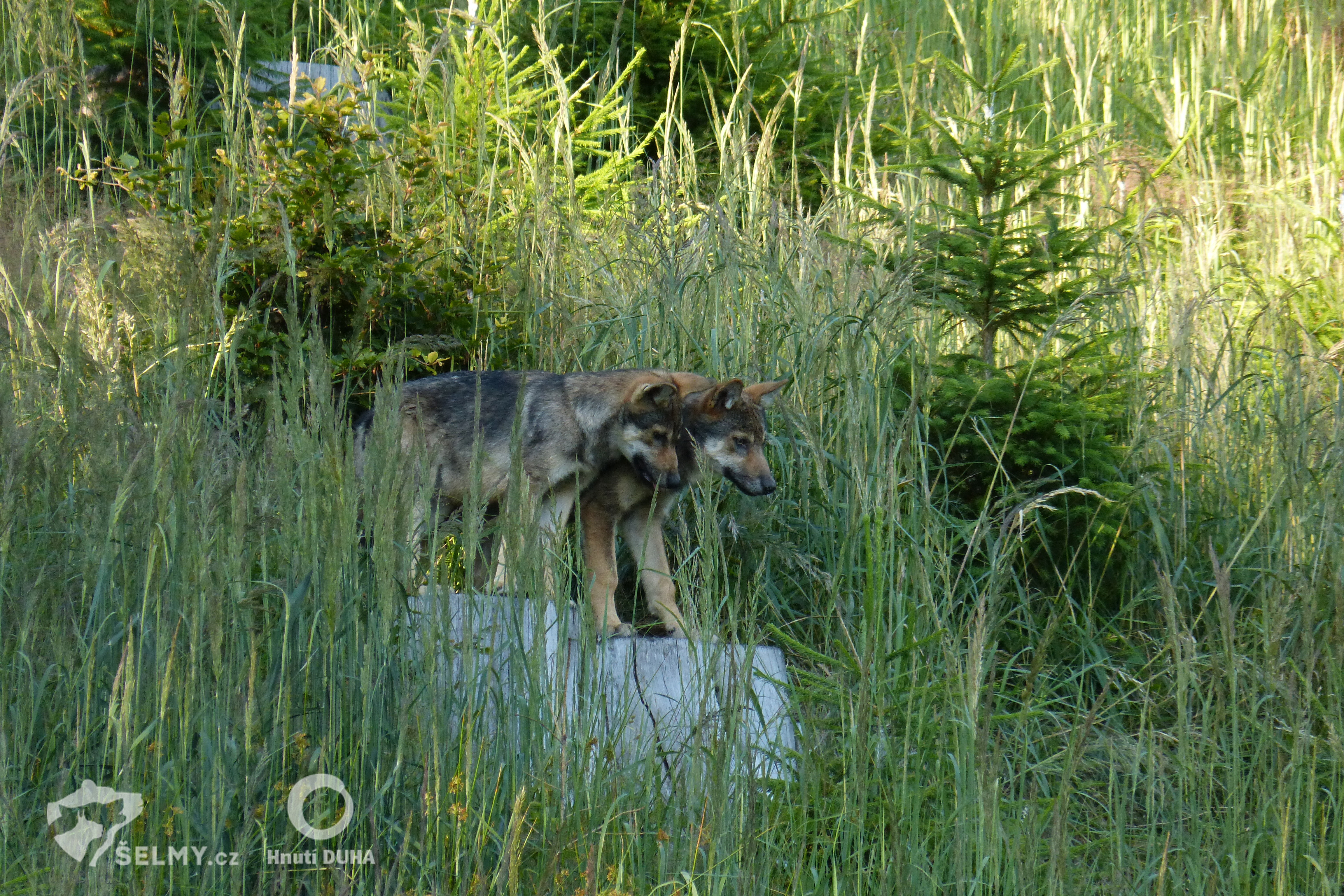 Young wolves in Javorníky. Photo: Michal Bojda
Young wolves in Javorníky. Photo: Michal Bojda
How does the SaveGREEN project contribute to a more ecologically connected Europe?
The work of SaveGREEN in the Czech pilot area contributes to this effort by analysing the structural and functional status of ecological corridors. The findings of the monitoring work, combined with knowledge obtained in the course of numerous stakeholder exchanges to raise awareness about the issue – and hopefully with the support of all relevant actors – will not only be applied within the pilot areas themselves, but will prove to be extremely valuable for future defragmentation efforts in other pilot areas throughout Europe.
The project has produced an informative factsheet already where you can learn more about the pilot area.
The next stop on our virtual tour is Romania, so stay tuned for the next article!
Follow our social media channels on Facebook and Twitter to stay updated, or subscribe to our newsletter to gain project insights!
Save nature: SaveGREEN!
Author:
Eszter Sebestyén - CEEweb
Contributed by:
Anna Řezníčková - Friends of the Earth CZ/Hnutiduha CZ, Ivo Dostál - Transport Research Centre (CDV), Ketino Popiashvili - Transport Research Centre (CDV)
